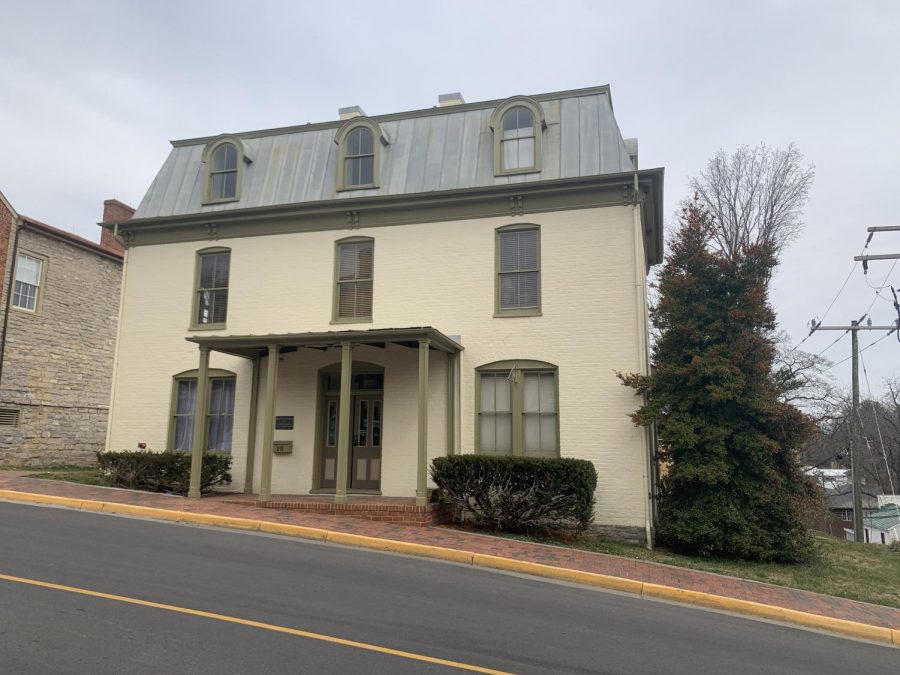COVID-19’s impact on museums, locally and nationally
In Lexington, museums are opening their doors after a difficult 2020.
March 19, 2021
A year ago, the Stonewall Jackson House opened its new addition featuring rarely-seen family heirlooms, bringing more people to the museum than had been there for years. But 15 days later, the pandemic closed the museum until July. The museum reopened to a more limited schedule on March 1 to a more limited schedule.
“Weekdays we had volunteers and weekends we had paid staff,” said Grace Abele, site director. “We did have to eventually let [the paid staff] go which was really unfortunate, we really didn’t want to do that,” said Abele, now the only full-time employee.
Other museums and tourist attractions have been hit hard by the pandemic, according to the Federal Reserve Bank of Richmond’s recent activity reports.
The impact that museums have on communities and the economy is much larger than most realize. COVID-19 exacerbated problems that museums were having reaching younger audiences that are interested in different, and unique opportunities. Some museums have created virtual exhibits that people can look at on their phones or computers. Travel to museums, as well as sporting events and weddings, is expected to increase as people get the vaccine and want to travel. Reports show beach rental properties are book for peak summer weeks.
According to a study done by the American Alliance of Museums, or AAM, and Oxford Economics, 726,000 jobs were supported by museums in 2016, and museums contributed $50 billion to the United States economy that same year. Museums also bring so much to their communities and their visitors in general.
A survey done in June by AAM reported that it was possible that over a third of museums could close due to the impact of the pandemic, and the October update to that survey reported 30% of museums across the country were still closed.
Many of the museums in Virginia have opened up, but there are a few exceptions like the Virginia Museum of History and Culture, VMHC, which is closed for construction. The museum hopes to make changes that will suit their audiences for years to come.
Well before the pandemic, museums started to become less popular to younger generations.
“People would come in and walk through the house themselves, and this kind of generation, gen. x and forward, that’s not really what they want to do anymore. So, things that my grandparents love to do are not things that my generation love to do,” Abele said.
Right now, the museum offers a digital tour on site that explains different elements of the rooms, such as in the parlor there is a chair that faces a wall because Jackson liked to sit and stare at a wall and review his lesson plans. In the future, they are looking to further enhance the virtual experience by offering themed tours and digital school programs.
Ordering tickets online in advance is required for entry for most museums including the Valentine Museum and The Children’s Museum of Richmond. Some places like the Virginia Museum of Fine Arts, VMFA, have timed tickets for certain exhibits to make sure all guidelines are followed.
Those guidelines might not have to be followed for much longer if the vaccine roll-out continues in the right direction. Hope for the future is what is keeping Abele going.
“Right now, it’s pretty steady. It looks pretty on par with most years. It has only been a week, but it seems like it is pretty on average with a normal year. Most people are really anxious to go out and see stuff. I have been hearing a lot of people saying ‘now that I’m vaccinated, I’m willing to travel,’” Abele said.
On Friday, the Bureau of Labor Statistics reported that most of the jobs gained occurred in leisure and hospitality. This further proves that even though there has been decreased interest in attractions in the past year, things are changing.
At Washington and Lee, museums have just opened up for students, faculty and staff. To sign up to visit the Reeves Museum of Ceramics and Watson Galleries go to tiny.cc/visitwlu.



